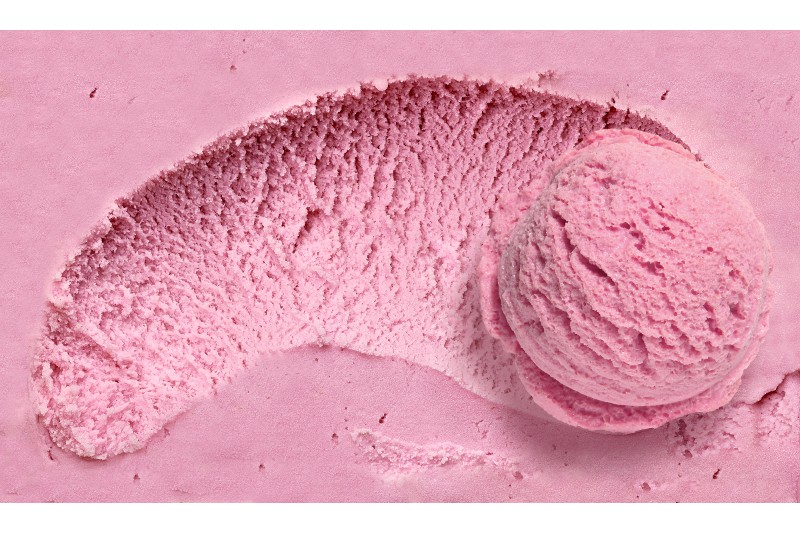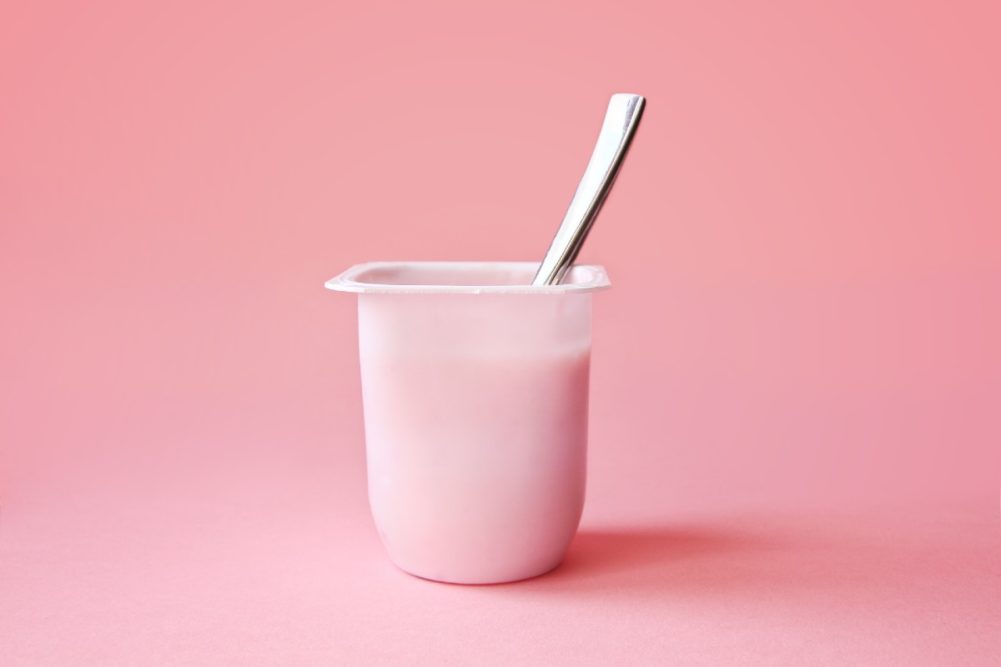Water – that molecule consisting of two hydrogen atoms covalently bonded to a single oxygen atom – is the principal constituent of milk, with cows’ milk being about 87% water.
Managing that moisture is paramount for quality and safety.
Types of water
The most basic form of water is referred to as bulk water. This is when water is free from any other constituents. Each water molecule is surrounded by other water molecules and its physicochemical properties resemble pure water. In other words, this is the water that comes from a spigot.
Trapped water, also known as capillary water, is moisture held in narrow channels between certain food components. This trapped water is surrounded by a physical barrier that prevents the water molecules from easily escaping. Think of the water in the skin of a blueberry used in a yogurt parfait. This type of water tends to have physicochemical properties similar to that of bulk water.
Physically bound water molecules are in molecular contact with other food constituents, such as proteins, carbohydrates, fats and minerals. These food constituents bind with water, creating a system that no longer recognizes the water as free bulk water. Think fluid milk. The bonds between water molecules and these constituents are quite different from water-water bonds.
Finally, there are chemically bound water molecules. This is when water molecules present in a food are chemically bonded to other molecules as water of crystallization or as hydrates. Salt and sugar are often the other molecules. These bonds can be very strong.
Content vs. activity
Federal regulations dictate the composition of many dairy foods. With butter, for example, the minimum butterfat content in American butters is 80%. By default, butter winds up being 16% to 18% water and 2% to 4% solids, inclusive of added salt. With water being a “free” ingredient, in terms of cost, calories and nutrition, there are maximum levels set for some foods in order to ensure product integrity.
“Moisture content effects texture,” said Mary Galloway, application scientist, Meter Group Inc., USA, Pullman, Wash. “The amount of moisture in a product also influences nutritional content and labeling requirements.”
The water content of food is expressed as a percent; however, this number does not reflect how the water exists in the food. Formulators must consider all four forms of water – bulk, capillary, physically bound and chemically bound – when trying to manage moisture. This takes into consideration water activity, which describes the energy status or the escaping tendency of the water in the food matrix. Water activity is a thermodynamic concept expressed as a ratio of the vapor pressure of water in a food to the vapor pressure of free water at the same temperature. It indicates how tightly water is bound in a food matrix.
Why does this matter? Water activity predicts safety and stability with respect to microbial growth, chemical and biochemical reaction rates, and various physical properties.
“If you understand how water activity works, you will be able to develop products that are stable and desirable to the consumer and can predict and prevent potential problems,” Galloway said. “There is a relationship between water activity and moisture content, but it is unique to each product and formulation.”
This relationship is explained by moisture sorption isotherms. These graphs allow for modeling of best formulations, in terms of quality and safety. They also allow for predictions of temperature abuse and shelf life.
Water activity is often described in terms of the amount of bound water and free water. Although these terms make the concept of water activity somewhat easier to conceptualize, the reality is that all water in food is somewhat bound; after all, it is contained in the food. Thus, water activity is a measure of how tightly water is bound and relates to the work required to remove water from the system.
“Differences in water activity dictate how water will move,” between components in a food matrix, between microorganisms and a food matrix, etc., Galloway said.
Most foods have a water activity above 0.95 and that will provide sufficient moisture to support the growth of bacteria, yeasts and mold, according to the US Food and Drug Administration (FDA), Washington, DC. The amount of available moisture can be reduced to a point that will inhibit the growth of the microorganisms.
One way to do this is with the addition of sucrose or sodium. These ingredients associate with the water in a food system, making the water unavailable to microorganisms. Like humans, microorganisms require water to thrive and proliferate. A water product activity of 0.85 is enough to inhibit the growth of dangerous bacteria.
Listeria monocytogenes is a common contaminant in the dairy environment, both on the farm and in the processing plant, according to Cornell University, Ithaca, NY. Though rare, the bacterium also is a cause of mastitis. Various studies have found from 2% to 6% of the raw milk samples tested contained L. monocytogenes.
It also is omnipresent in the environment. Deli cheeses, processed/soft cheeses and spreads, and unpasteurized or improperly pasteurized milk and products made from that milk are susceptible to contamination. L. monocytogenes grows under refrigeration and other food preservation measures. When consumed, it is possible to get sick with listeriosis, a flu-like illness that could be fatal in certain populations.
Here’s where water activity comes into play. In order for L. monocytogenes to grow, it requires a minimum water activity of 0.92. If the product matrix has a lower water activity, the bacteria cannot grow. This is why salt and sugar are such critical components of perishable dairy foods. They are not included just for taste. They are added also to assist with ensuring food safety.
 Photo: ozmen - stock.adobe.com
Photo: ozmen - stock.adobe.com
Binding water
Ingredient suppliers often talk in terms of “water binding” functionality. This is important for influencing the texture, mouthfeel and viscosity of the product. In general, the greater the water content, the more “fluid” the product. Viscosity increases as water content decreases or gets bound up by other ingredients.
In fluid products, such as milk, dairy beverages and drinkable yogurt, water is somewhat free flowing. These products are all liquids, with the water component functioning as a solvent or base for the solids, which remain in solution as a result of inherent and added emulsifiers and added hydrocolloids, as well as the process of homogenization. These technologies are usually enough to manage the moisture in liquid products so that there’s no separation or sedimentation.
But it’s the water in semi-solid and solid dairy foods, such as cheese, ice cream, sour cream and yogurt, that needs to be carefully managed for best consistency. Formulators often rely on hydrocolloids to do this. This function is alluded to in the name, where the prefix “hydro” means water and “colloid” means a gelatinous substance.
In general, hydrocolloids are hydrophilic, high-molecular weight compounds, usually with colloidal properties. Many are polysaccharides, e.g., fibers, starches, gums, etc.; however, some proteins, such as gelatin, as well as specialty proteins derived from eggs and milk, are considered hydrocolloids. Their primary function is thickening or gelation, while secondary functions include aeration, emulsification, encapsulation and suspension.
In dairy products, hydrocolloids are most often used to stabilize, thicken or gel the system. Hydrocolloids work in combination with carbohydrate, protein and fat components in the dairy system. Blends are common, as they work synergistically to achieve texture and stability goals with lower total addition levels. Thus, hydrocolloid blends may reduce formulation costs.
Economics are always a product development consideration. Hydrocolloids have proven to have a positive impact on the bottom line – remember, their primary function is to keep water in the system. This improves yields and profits.
Hydrocolloids also play an important role in keeping ingredients stable in dairy product systems. This includes identifiable pieces such as nuts, superfruits and cereals, such as oats in yogurt, as well as vitamins, minerals and other nutrients, including fiber and protein.
By definition, all hydrocolloids bind water. After that, they vary in functionality and long-term performance. For example, some hydrocolloids form thermoreversible gels, where gelation occurs after the hydrocolloid dissolves in solution and is cooled. When heat is applied, the gel melts or dissolves. This is best exemplified by gelatin dessert, which melts in the mouth at body temperature. Gelation temperature and melting point varies by hydrocolloid.
Other hydrocolloids form non-thermoreversible gels, also called thermally irreversible gels, and will not liquefy when heated. They may soften or shrink, which is also referred to as retrograde. In other words, the gel remains mostly intact once formed.
There also are some hydrocolloids that do not form any type of gel on their own, but will do so in the presence of other compounds. The challenge lies in finding the right balance between the different gelling characteristics. This allows for products with superior moisture retention and desirable mouthfeel and texture.
Xanthan gum, for example, is produced by microbial fermentation. It is a non-gelling hydrocolloid that hydrates rapidly in cold water to give a reliable viscosity, with a little going a long way. Its consistent water-holding ability makes it a very effective tool for controlling syneresis. When used in combination with carrageenan, xanthan contributes synergistically to the formation of a thermoreversible gel, meaning that less carrageenan is required to form the gel.
Syneresis is the expulsion of lightly bound water in a matrix into free water. Think of that pocket of liquid in a container of sour cream. In cheesemaking, syneresis refers to the expulsion of whey when the coagulated milk is cut.
Guar gum also is commonly used in cultured dairy applications to prevent the development of standing water. Guar gum is obtained from plant seeds. The powdered ingredient disperses and swells almost completely in cold water to form a highly viscous solution. Like xanthan, it is not self-gelling, and has an extremely high water-binding capacity.
Native starches typically form non-thermoreversible gels and will retrograde over time, which results in syneresis. Hence, historically, chemically modified food starches have been used to bind moisture in dairy products, as modification adds stability and resistance to retrogradation and syneresis. With the trend toward cleaner labeling, formulators are revisiting the use of native starches, in particular those that have been physically modified for improved functionality.
A number of clean-label functional fibers deliver similar functionalities as hydrocolloids in dairy applications. This includes thickening, emulsifying stabilization, reduced syneresis and fat reduction.
Hydrocolloids are especially useful in the stabilization of dairy products with lower fat or solids content. In full-fat yogurt, for example, fat is entrapped in the protein network and upon consumption, yields a lubricating effect on the tongue and palette, imparting a creamy sensation. When fat is reduced or removed, there’s a change in the texture and mouthfeel. To achieve the creamy sensation associated with full-fat yogurt, gelatin is often the hydrocolloid of choice. This is because gelatin can absorb five to 10 times its weight in cold water. Specifically with yogurt, gelatin prevents whey from being expelled from the casein gel. The gelatin molecules form a lattice in the casein gel during the gelling process that gets stabilized by hydrogen bonding.
With frozen desserts, hydrocolloids play an important role in the product at two separate junctions in its lifecycle, at both the mix and frozen stages. With the mix, hydrocolloids aid in suspension and help to provide emulsion stability. When the mix gets processed to a frozen state, the hydrocolloids hold water in place, thereby reducing iciness and preventing a coarse texture from developing during heat-shock cycles.

